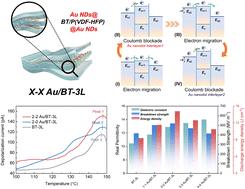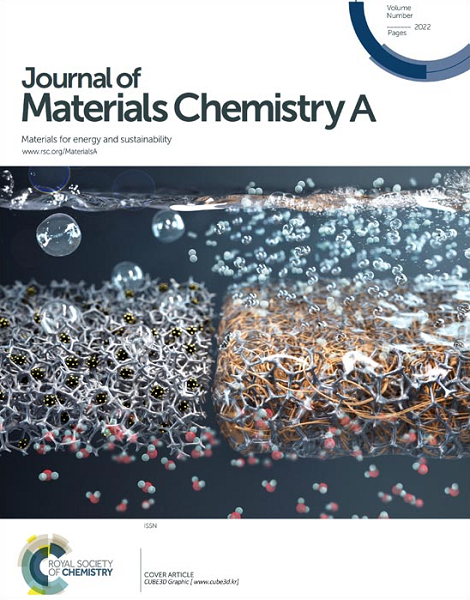Constructing dual interfacial gold nanodot interlayers in sandwich-structured BaTiO3/P(VDF-HFP) composites for high energy storage density
IF 10.7
2区 材料科学
Q1 CHEMISTRY, PHYSICAL
引用次数: 0
Abstract
Polymer dielectrics characterized by high power density, fast discharge rate and reliability are critical in pulse energy storage systems. However, the low discharge energy density (Ud) of polymer dielectrics, stemming from the inverse coupling between dielectric constant (εr) and breakdown strength (Eb), renders them insufficient to meet miniaturized requirements of modern electronics. To address this challenge, we propose constructing dual interfacial gold nanodot interlayers within a barium titanate (BT)/poly(vinylidene fluoride-hexafluoropropylene) (P(VDF-HFP)) trilayer composite (BT-3L) to synergistically enhance its εr and Eb, ultimately achieving high Ud. Specifically, dual gold nanodot interlayers are anchored at the interface between the P(VDF-HFP) outer layer and the BT/P(VDF-HFP) middle layer via sputtering and hot-pressing processes. Benefiting from the interfacial polarization and Coulomb blockade effect induced by gold nanodots, the concurrently enhanced εr of 12.9 at 10 kHz and Eb of 520.08 MV m−1 are achieved. Consequently, a significantly improved Ud of 14.78 J cm−3, which is approximately 176.4% that of the BT-3L composite (∼8.38 J cm−3), is further realized in this composite with dual gold nanodot interlayers. This work provides a promising approach for designing high-performance multilayer dielectric composites.

求助全文
约1分钟内获得全文
求助全文
来源期刊

Journal of Materials Chemistry A
CHEMISTRY, PHYSICAL-ENERGY & FUELS
CiteScore
19.50
自引率
5.00%
发文量
1892
审稿时长
1.5 months
期刊介绍:
The Journal of Materials Chemistry A, B & C covers a wide range of high-quality studies in the field of materials chemistry, with each section focusing on specific applications of the materials studied. Journal of Materials Chemistry A emphasizes applications in energy and sustainability, including topics such as artificial photosynthesis, batteries, and fuel cells. Journal of Materials Chemistry B focuses on applications in biology and medicine, while Journal of Materials Chemistry C covers applications in optical, magnetic, and electronic devices. Example topic areas within the scope of Journal of Materials Chemistry A include catalysis, green/sustainable materials, sensors, and water treatment, among others.
 求助内容:
求助内容: 应助结果提醒方式:
应助结果提醒方式:


